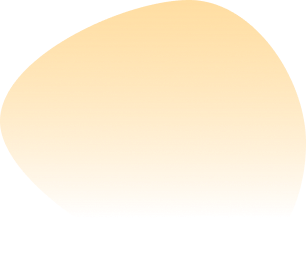
Glaucoma
Glaucoma is a group of eye conditions that damage the optic nerve, often due to high eye pressure. Early detection and treatment help prevent vision loss
Glaucoma incidence/prevalence
Glaucoma is a group of eye diseases that damage the optic nerve, which is crucial for vision. This damage is often related to increased pressure within the eye. If untreated, glaucoma can lead to vision loss and even blindness. The prevalence increases with age with around 2% of people aged 40-49 affected, rising to over 10% in over 80.
Glaucoma Causes
Glaucoma can result from various factors that contribute to increased intraocular pressure and damage to the optic nerve. Here are some key causes and risk factors:
Primary Causes
- Intraocular Pressure (IOP): The most significant factor. Fluid (aqueous humor) in the eye may not drain properly, leading to increased pressure.
- Genetics: A family history of glaucoma significantly increases the risk.
Contributing Factors
- Age: Risk increases as you get older, especially after age 60.
- Ethnicity: Certain groups, like African Americans and Latinos, are at higher risk.
- Medical Conditions:
- Diabetes: Increases the risk of developing glaucoma.
- Hypertension: High blood pressure can contribute to the condition.
- Thyroid Problems: Can affect eye health.
- Eye Conditions: Previous eye injuries, inflammation, or conditions like high myopia (nearsightedness) can lead to glaucoma.
- Medications: Long-term use of corticosteroids can increase the risk.
- Structural Factors: Anatomical features of the eye, such as a narrow drainage angle, can predispose individuals to angle-closure glaucoma.
Secondary Causes
- Eye Injury: Trauma can lead to increased pressure.
- Inflammation: Conditions like uveitis can affect drainage.
- Tumors: Growths can block fluid drainage.
- Other Health Issues: Conditions like retinal detachment or certain vascular diseases.
Glaucoma Diagnosis and Examination Process
Diagnosing glaucoma typically involves a comprehensive eye examination and several specific tests to assess eye health and pressure. Here’s an overview of the diagnosis and examination process:
- Patient History
- Intraocular Pressure (IOP) Measurement
- Optic Nerve Examination
- Visual Field Testing
- Pachymetry
- Gonioscopy
Glaucoma Treatments
Glaucoma treatments aim to lower intraocular pressure (IOP) to prevent damage to the optic nerve and preserve vision. Here are the primary treatment options:
- Medications
- Laser Treatments
- Surgical Procedures
- Monitoring and follow up
- Lifestyle Adjustment
Consult an Eye Expert for Glaucoma Today

Doctors and Specialists
Our Medical Team
Our team of highly skilled and experienced ophthalmologists and optometrists is committed to delivering personalized, comprehensive eye care

Phaco Surgeon & Vitreo-Retinal Surgeon
Dr. Mohamed Azzam

Vitreo-Retinal & Phaco Surgeon
Dr. Amogh Dileep Asgaonkar

Phaco Surgeon and Pediatric Ophthalmology
Dr. Arjun Malla Bhari

Information & Testimonials
Read inspiring stories from patients who have experienced clearer vision and compassionate care with EyeCare, reflecting the trust and results we strive for every day
Frequently Asked Questions
A. Glaucoma often develops slowly and painlessly, so early stages may have no noticeable symptoms. As the disease progresses, symptoms may include:
Tunnel vision
Blurred vision
Seeing halos around lights
Eye pain or headache (more common in angle-closure glaucoma)
A. You should see an eye doctor if you experience symptoms like vision changes or eye pain, especially if you have risk factors for glaucoma. Regular eye exams are essential for early detection, particularly if you are over 40, have a family history of glaucoma, or have other risk factors.
A. While you can’t always prevent glaucoma, you can reduce your risk by:
Having regular eye exams, especially if you’re at higher risk.
Monitoring eye pressure if you have a family history of glaucoma or other risk factors.
Taking prescribed medications as directed.
A. There are four primary types of glaucoma:
Chronic (open angle) Glaucoma is the most common form, caused by IOP build-up over-time typically because of aging.
Acute (angle closure) glaucoma is a rare form that requires immediate medical attention. It develops because of suddenpressure build-up.
Secondary glaucoma can develop from complications of medical conditions such as, diabetes and hypertension, other ocular conditions, side effects of medications, or trauma to the eye.
Normal tension glaucoma develops when the optic nerve is damaged, without the presence of high IOP. The cause of this type of glaucoma is still unknown.
A. With early diagnosis and proper treatment, many people with glaucoma can manage their condition effectively and maintain their vision. However, glaucoma is typically a lifelong condition that requires ongoing management and monitoring.

